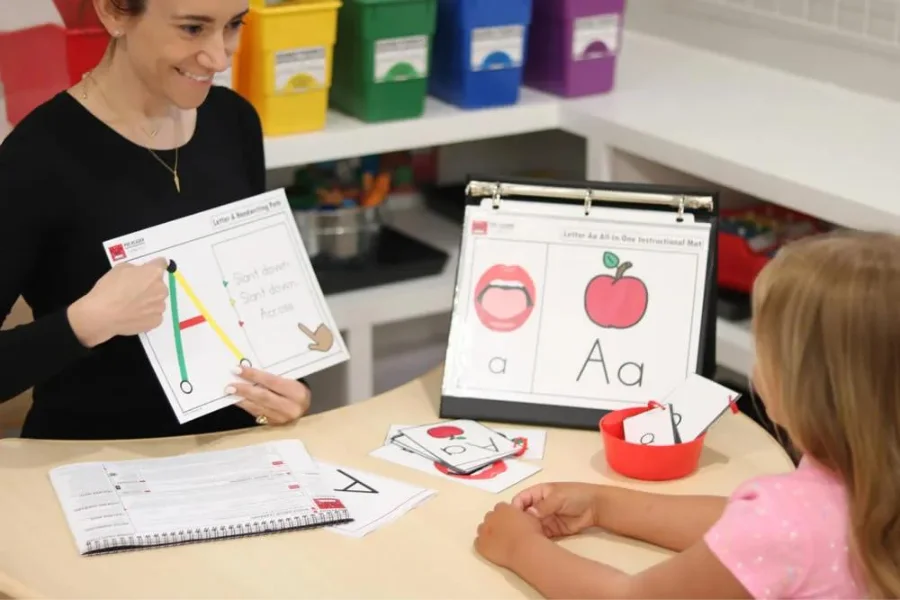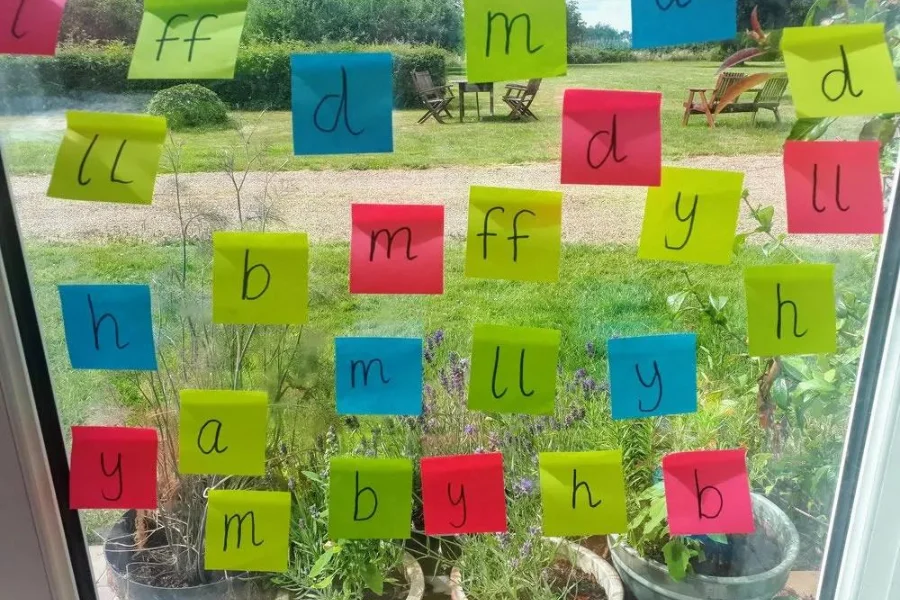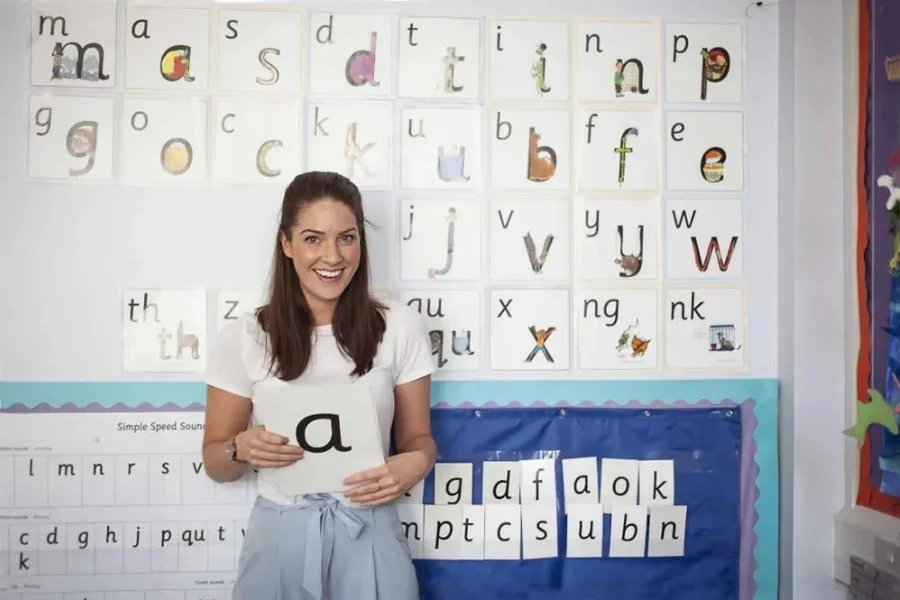Y as a Vowel
Source: ruthmiskin
Y as a Vowel
In the English language, the letter ‘Y’ grasps a different place, particularly when it steps out of its normal role, to act as a vowel. This interesting phenomenon of Y as a Vowel opens up an interesting world of spelling and pronunciation that mostly goes ignored. By learning Y as a Vowel, we can reveal the delicate degrees that make English a rich and active language.
This post aims to shed light on how Y transforms words and enriches our understanding, marking its significance beyond its consonantal duties. Whether it’s in everyday use of words or more complex linguistic structures, this concept plays a pivotal role in the way we communicate and understand language.
Table of Content
Is Y a Vowel or Consonant?
Is Y a vowel or consonant? This question mostly triggers interest among language enthusiasts and students. The English alphabet categorizes Y uniquely, allowing it to wear two hats, depending on its placement and usage in words. This contrast makes the study of whether Y is a vowel or consonant not only interesting but necessary for a deeper knowing of English phonetics and spelling rules.
When exploring into the debate of Y as a vowel or consonant, it’s important to identify the settings under which Y accepts its vowel role. Typically, Y functions as a consonant at the beginning of words, like in yellow or yes. However, when situated within or at the end of a word, Y often takes on the sound of a vowel, as seen in mystery or happy. This transition showcases Y’s flexibility and its significant contribution to the phonetic richness of English.
Defining if Y is a vowel or consonant also depends on the phonetic context it finds itself in. In cases where Y tails another vowel in a syllable, it contributes to making different vowel sounds, further strengthening its role as a vowel in such scenarios. This dual nature of Y not only improves the language but also gives interesting challenges and learning chances for both native speakers and students of English.
The question of Y as a vowel or consonant tells the letter’s unique position within the English alphabet. Knowing when and how Y acts as either a vowel or consonant increases one’s understanding of English phonetics, spelling, and pronunciation. Through examining examples of Y in various linguistic contexts, we gain valuable visions into its useful role, making the survey of Y as a vowel or consonant both interesting and informative.
Call on +919869866277 / +919869546913, to know more about Phonics Teacher Course.
Click Here, to download the Phonics Teacher Course brochure!

Source: littlemindsatwork
What Words Use Y as a Vowel?
The English language is known for its flexibility and the countless ways it can surprise us, mainly with its letters taking on multiple roles. One such interesting feature is when ‘Y’ acts not as a consonant, but as a vowel. This exceptional role of ‘Y’ widens the range of words and sounds within the language, showing its usefulness. In this post, we will learn different examples of how words use ‘Y’ as a vowel, shedding light on this interesting language feature.
Knowing when and how words use ‘Y’ as a vowel can increases one’s hold of English phonetics and spelling. It typically occurs in two main scenarios:
At the end of words, where ‘Y’ produces a long ‘I’ or a long ‘E’ sound, as seen in:
- ‘Cry’
- ‘Sky’
- ‘Happily’
- ‘Mystery’
In the middle of words, acting as a substitute for the vowel sound, such as:
- ‘Gym’
- ‘Symbol’
- ‘Myth’
By knowing these patterns, students and teacher can better consider the dynamics of English spelling and pronunciation. The role of ‘Y’ as a vowel not only adds to the fullness of the language but also challenges the straight rules we mostly take for granted.
Exploring words that use ‘Y’ as a vowel, reveal the playful complexity of English. This language quirk underlines the importance of setting in defining the sound and function of letters. As we explore deeper into words that use ‘Y’ as a vowel, we reveal the layered nature of language learning and the endless potentials it presents for both communication and creativity.
Through this consideration of words that use ‘Y’ as a vowel, it becomes obvious how necessary such degrees are to mastering English. Whether you’re a language student, a seasoned teacher, or simply a language keen, gaining these restraints can develop your knowledge and use of the language. The usefulness of ‘Y’ helps as a reminder of the endless learning chances and surprises introduced by the English language.
Call on +919869866277 / +919869546913, to know more about Phonics Teacher Course.
Click Here, to download the Phonics Teacher Course brochure!
What is the Rule for the Vowel Y?
The English language is full of details, mostly when it comes to its alphabet and the parts its letters play. Among these letters, Y stands out for its special ability to work both as a consonant and as a vowel. Today, we’re concentrating on the Rule for the Vowel Y, a guideline that helps students and seasoned teachers to understand its dual nature. This rule for the Vowel Y isn’t just an unimportant detail; it’s a key part of mastering the details of English pronunciation and spelling.
Understanding the Rule for the Vowel Y
The Rule for the Vowel Y is straightforward once you get the hang of it. Essentially, Y acts as a vowel in certain conditions:
- When Y is at the end of a word and there is no extra vowel in the word, it mostly makes a vowel sound (e.g., cry, try).
- In the center of a word, when Y is walled by consonants, it generally takes on the sound of a vowel (e.g., mystery).
- When Y is part of a syllable that needs a vowel sound and no other vowel is existing, Y paces in as the vowel (e.g., gym, myth).

Source: images.squarespace-cdn
Examples and Application of the Rule for the Vowel Y
To better understand how the Rule for the Vowel Y operates, let’s consider a few examples:
- At the End of a Word: In words like sky or fly, Y helps as the vowel, creating a long I sound.
- In the Middle of a Word: For words such as cylinder or symbol, Y turns as a vowel, pleasing the need for a vowel sound among the consonants.
This guideline not only helps in proper pronunciation but also in spelling, allowing students to make educated guesses about unknown words.
The Rule for the Vowel Y is necessary for anyone to understand the flexible nature of English spelling and pronunciation. By knowing and applying this rule, you can majorly advance your language abilities, making it easier to communicate well. Remember, the English language is full of exceptions and differences, but rules like the Rule for the Vowel Y gives a solid base for directing its difficulties. Whether you’re reading, writing, or speaking, keeping the Rule for the Vowel Y in mind will indeed enhance your language ability.
Call on +919869866277 / +919869546913, to know more about Phonics Teacher Course.
Click Here, to download the Phonics Teacher Course brochure!
Why is Y Used as a Vowel?
In the interesting world of English language, the letter Y holds a special position. Mostly referred to as the shape shifter of the alphabet, Y excels its first classification as a consonant to also function as a vowel. The utilization of Y as a vowel is not random but is rooted in the letter’s history, phonetic elasticity, and the important demands of the English language.
Historical Context
- The roots of Y can be drawn back to the Latin alphabet, where it was used to signify the Greek letter upsilon.
- In Old English, Y was marked as a long ü sound (similar to the German ü or the French u), which is clearly vowel-like.
- Over time, the pronunciation and use of Y evolved, but its ability to represent vowel sounds in certain contexts was retained.
Phonetic Flexibility
- Vowel Characteristics: A vowel is considered by the free flow of air from the mouth without being blocked by the tongue, lips, or teeth. Y shows this feature when it makes sounds same to I or E.
- Ending Sounds: In words where Y concludes a syllable or word, such as sky or hymn, it takes on the sound of a vowel, showcasing its versatility.
Structural Demands of English
- Syllable Formation: The English language needs at least one vowel sound in every syllable. In cases where other vowels are lacking, it gives the necessary vocalic sound to form a syllable, as seen in words like myth or gym.
- Linguistic Economy: It helps to maintain language economy, allowing the short and well-organized formation of words and sounds.
The role of Y as a vowel is a testament to the dynamic and adaptable nature of language. It demonstrates how historical evolution, phonetic flexibility, and structural requirements converge to shape the way we communicate. Knowing the dual role of Y improves our understanding of the English language’s complexity and its capability to develop. This consideration of Y not only fulfils language curiosity but also increases our consideration of language as a living, breathing unit.
The usage of this concept is important for different reasons, ranging from historical development and phonetic features to satisfying the basic demands of English. This compliance makes Y a necessary component of the language, reflecting the ever-developing nature of language expression.
Call on +919869866277 / +919869546913, to know more about Phonics Teacher Course.
Click Here, to download the Phonics Teacher Course brochure!
Phonics Teacher Training Course
In today’s educational setting, the importance of proper reading and writing ability from an early age cannot be excessive. One interesting method is learning through phonics, a method that teaches reading and spelling by connecting sounds with letters or groups of letters. For teachers aiming to specialize in this important area, the Phonics Teacher Training Course provided by Vidhyanidhi Education Society (Govt. regd.) stands out as a special chance to shine.
The Phonics Teacher Training Course by VES is customized to help teachers with the abilities and resources needed to conduct their own phonics classes for children. This course not only enhances your teaching abilities but also prepares you for a successful career in phonics education.

Source: readingeggs
Here are some of the standout benefits of enrolling in this course:
Guidelines to Start Your Own Phonics Classes for Kids
VES provides in-depth guidance on how to set up and run your phonics classes, covering all aspects from classroom setup to effective teaching strategies.
Teachers Handbook
A comprehensive handbook is provided, serving as a go-to resource for phonics teachers. This handbook covers the A to Z of phonics teaching methodologies and practices.
300+ Ready-to-Use Printable Worksheets
Kick-start your phonics teaching career with more than 300 worksheets designed to reinforce learning. These worksheets are a valuable resource for engaging students in interactive learning activities.
42 Printable Flashcards
Enhance your teaching with these visual aids that make learning fun and effective. Flashcards are a proven tool in improving memory and understanding of concepts.
Word Bank with 650+ Words:
A rich word bank is included, featuring over 650 words that incorporate digraphs and alternative vowel sounds such as ai, oa, ay, ow, ei, etc. This extensive collection, aids in expanding the vocabulary and reading skills of learners.
Additional Hand-Outs
To further aid your teaching, the course includes various hand-outs that can be used alongside your regular teaching materials.
Tips to Execute Day-Wise Lessons
Get practical tips on planning and executing lessons effectively, ensuring a structured learning experience for your students.
Widely Accepted Certificate
Upon completion, members receive a certificate that is usually recognized, adding worth to your professional profile and opening doors to number of teaching opportunities.
The Phonics Teacher Training Course from Vidhyanidhi Education Society (Govt. regd.) is an important tool for teachers looking to focus in phonics. With its complete curriculum, wide resources, and hands-on guidance, it gives everything you need to start your own phonics classes for children and get on a rewarding teaching career. Whether you’re a experienced teacher or new to teaching, this course provides the tools and knowledge to make an impact in the field of early childhood education.
Master ‘Y as a Vowel’ with Vidhyanidhi Education! Enroll now & transform your skills!
Call on +919869866277 / +919869546913, to know more about Phonics Teacher Course.
Click Here, to download the Phonics Teacher Course brochure!
FAQs
How to Become a Phonics Tutor?
Gain deep phonics knowledge, complete a certification course, and gain practical teaching experience to start tutoring.
Where can I do Phonics Course Online?
Vidhyanidhi Education Society offers comprehensive online phonics courses, ideal for aspiring tutors.
What is Duration of Phonics Teacher Training Course?
The duration of the Phonics Teacher Training Course differs, but generally ranges from a few weeks to a month, liable on the program.





